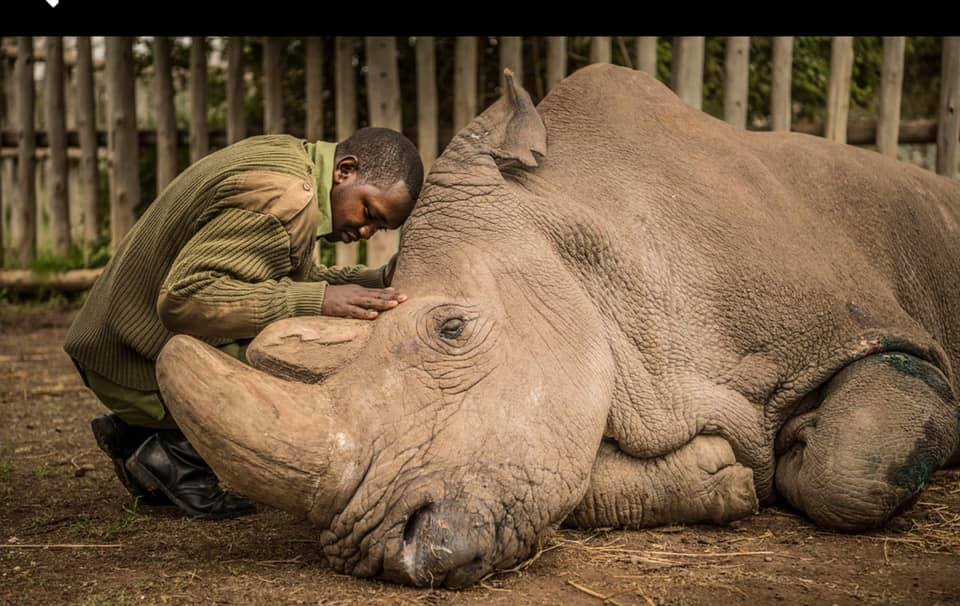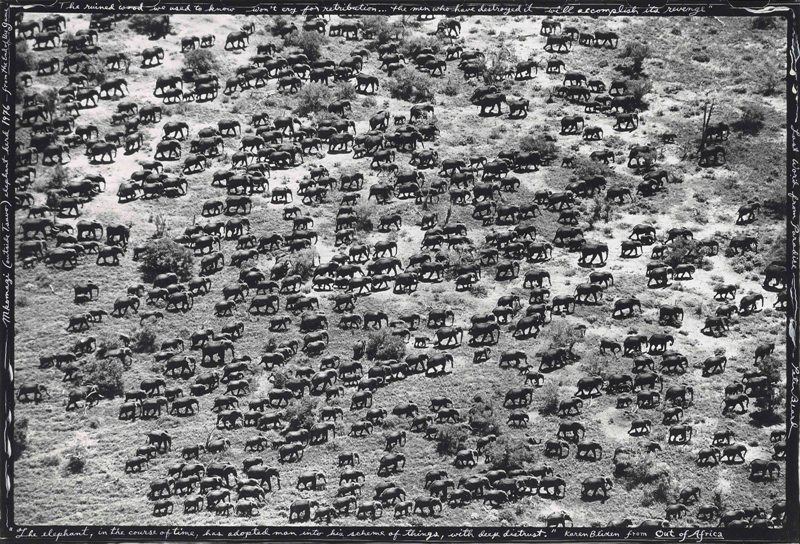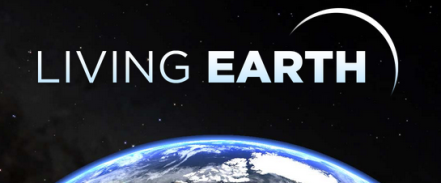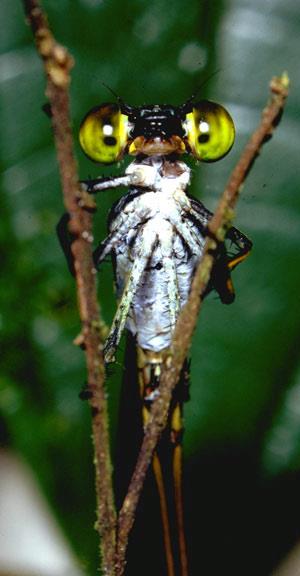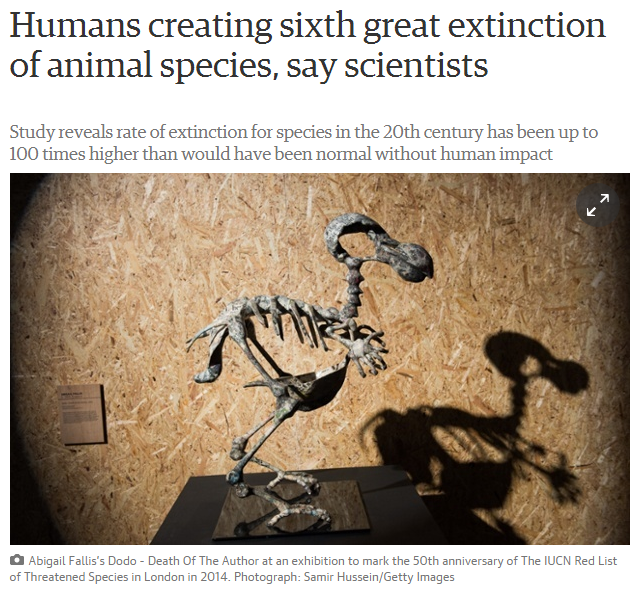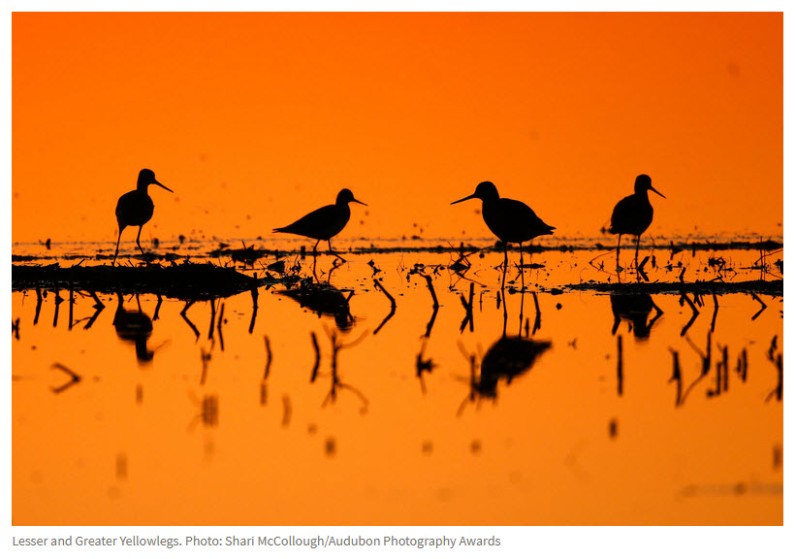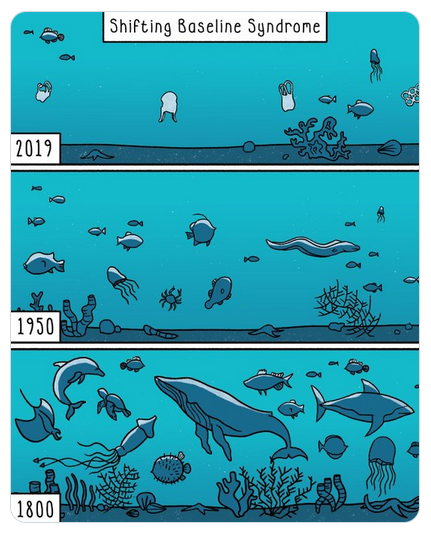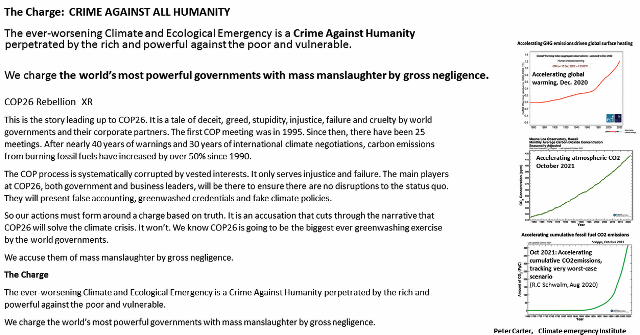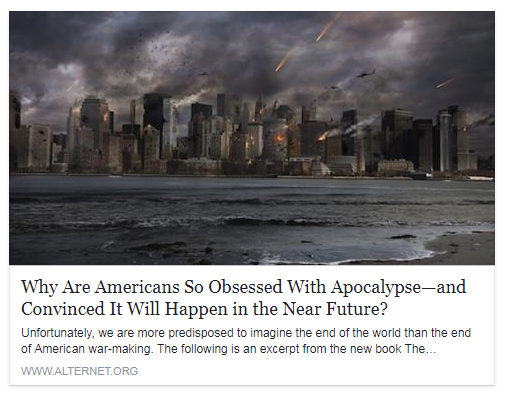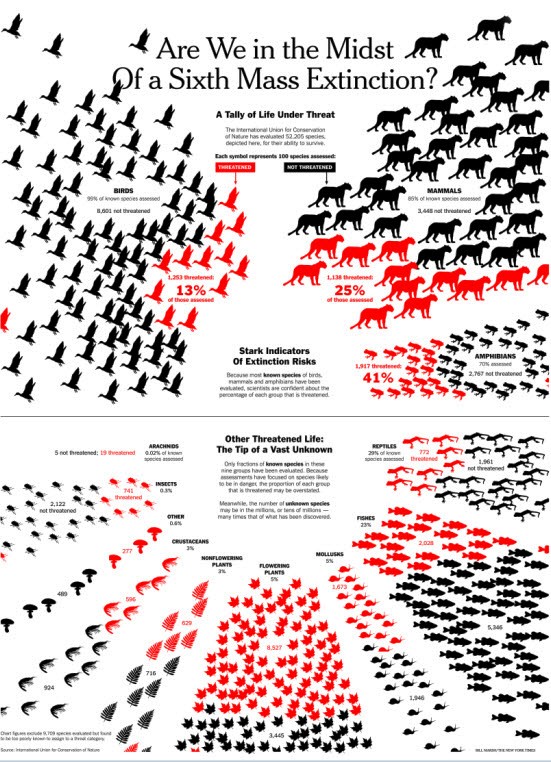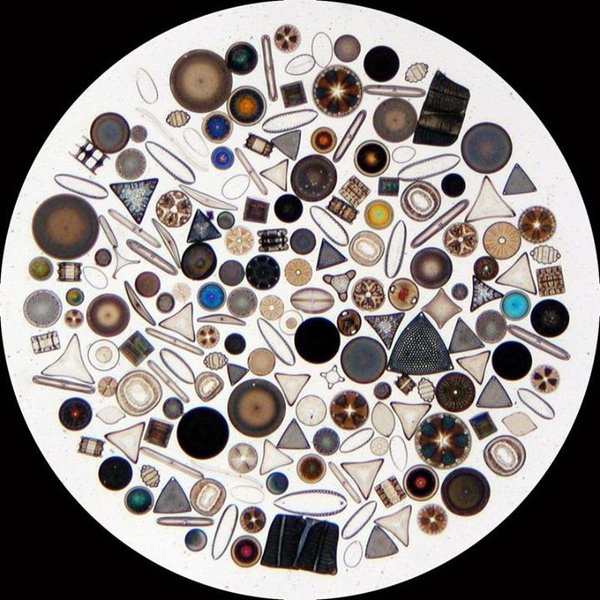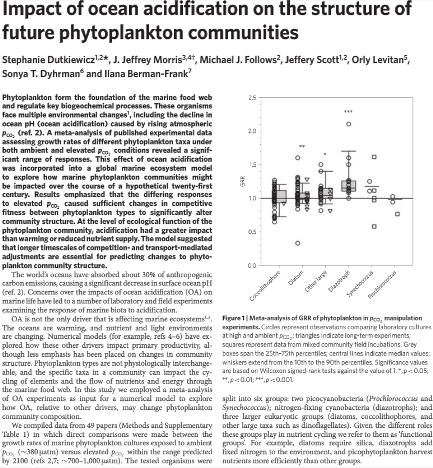Extinction: Difference between revisions
Siterunner (talk | contribs) No edit summary |
Siterunner (talk | contribs) mNo edit summary |
||
| (5 intermediate revisions by the same user not shown) | |||
| Line 1: | Line 1: | ||
[[File:Last male northern white Rhino - 2018.jpg]] | |||
:[http://www.greenpolicy360.net/w/Anthropocene <big><big><big>'''In the Age of the Anthropocene'''</big></big></big>] | |||
:::[[File:Elephant herd from the End of the Game-by Peter Beard.jpg]] | |||
<small>Before the colonialists arrived, there were an estimated 25 million elephants in Africa...</small> | :::<small>Photo by Peter Beard, In Mkomazi, 1976</small> | ||
<small>"End of the Game" ... Before the colonialists arrived, there were an estimated 25 million elephants in Africa...</small> | |||
<small>By 1900 this number had fallen to 10 million and by 1979 the counts of the elephant population were down to 1.3 million. By the mid-1990s they were below 300,000.</small> | <small>By 1900 this number had fallen to 10 million and by 1979 the counts of the elephant population were down to 1.3 million. By the mid-1990s they were below 300,000.</small> | ||
| Line 20: | Line 22: | ||
🌎 | 🌎 | ||
[http://www.greenpolicy360.net/w/Endangered_species <big><big><big>'''Endangered Species'''</big></big></big>] | |||
<big><big>'''The Living Planet Report'''</big></big> | <big><big>'''The Living Planet Report'''</big></big> | ||
'''The 2022 edition of the biennial Living Planet Report of the World Wildlife Fund (WWF) shows an average 69% decline in the relative abundance of monitored wildlife populations worldwide between 1970 and 2018...''' | |||
* https://www.wwf.org.uk/sites/default/files/2023-05/WWF-Living-Planet-Report-2022.pdf | * https://www.wwf.org.uk/sites/default/files/2023-05/WWF-Living-Planet-Report-2022.pdf | ||
| Line 756: | Line 763: | ||
○ ○ ○ ○ ○ ○ ○ ○ ○ ○ ○ ○ ○ ○ ○ ○ ○ ○ ○ ○ ○ ○ ○ ○ | ○ ○ ○ ○ ○ ○ ○ ○ ○ ○ ○ ○ ○ ○ ○ ○ ○ ○ ○ ○ ○ ○ ○ ○ | ||
Re:'Human Extinction' | |||
<big>'''''Nuclear Weapons and the Human Threat of Nuclear Catastrophe'''''</big> | <big>'''''Nuclear Weapons and the Human Threat of Nuclear Catastrophe'''''</big> | ||
| Line 776: | Line 785: | ||
* https://www.greenpolicy360.net/w/Apocalyptic_Thinking | * https://www.greenpolicy360.net/w/Apocalyptic_Thinking | ||
Latest revision as of 14:54, 24 February 2024
- Photo by Peter Beard, In Mkomazi, 1976
"End of the Game" ... Before the colonialists arrived, there were an estimated 25 million elephants in Africa...
By 1900 this number had fallen to 10 million and by 1979 the counts of the elephant population were down to 1.3 million. By the mid-1990s they were below 300,000.
The huge seasonal elephant herds that once crossed regularly between Tsavo and Mkomazi are beginning to come back, after reaching a reported low point of a few dozen elephants in the area in 1989.
🌎
The Living Planet Report
The 2022 edition of the biennial Living Planet Report of the World Wildlife Fund (WWF) shows an average 69% decline in the relative abundance of monitored wildlife populations worldwide between 1970 and 2018...
🌎
We Are Living in a Mass Extinction
“We are living in the middle of a mass extinction today, but none of us feel that urgency, or that it really is so.”
- -- Dr. Gerta Keller, Princeton University
"Yes, It's Time to be Extremely Concerned"
🌎
African penguins could be extinct by 2035
- Population has declined dramatically due to overfishing and environmental changes in the Indian Ocean
In the early 20th century, it is thought that there were probably several million breeding pairs: today, fewer than 11,000 breeding pairs remain, and the population continues to fall sharply.
The penguin is listed as endangered by the International Union for Conservation of Nature on its Red List of threatened species. By 2035, on current trends, scientists say there will not be enough breeding pairs for the species to continue to survive in the wild...
○
Scientists say Earth is in midst of a 'Sixth Mass Extinction' with wildlife on Earth running out of places to live
60 Minutes / CBS / January 1, 2023
In what year will the human population grow too large for the Earth to sustain? The answer is about 1970, according to research by the World Wildlife Fund. In 1970, the planet's 3 and a half billion people were sustainable. But on this New Year's Day, the population is 8 billion. Today, wild plants and animals are running out of places to live. The scientists you're about to meet say the Earth is suffering a crisis of mass extinction on a scale unseen since the dinosaurs. We're going to show you a possible solution, but first, have a look at how humanity is already suffering from the vanishing wild.
In Washington state, the Salish Sea helped feed the world.
Dana Wilson: With this weather and the way things feel once I get out here, it's time to be fishing, that's what it feels like.
Commercial fisherman Dana Wilson supported a family on the Salish Sea's legendary wealth of salmon. He remembers propellers churning the water off blaine, washington and cranes straining for the state's 200 million dollar annual catch.
Dana Wilson: That used to be a buying station, they're gone now, they don't buy anymore. So, that building over there used to buy salmon, they don't buy salmon anymore, it's just not here.
In 1991, one salmon species was endangered. Today, 14 salmon populations are foundering. They've been crowded out of rivers by habitat destruction, warming, and pollution. Dana Wilson used to fish all summer. Today, a conservation authority grants rare, fleeting, permission to throw a net.
Scott Pelley: There was a season.
Dana Wilson: There was a season.
Scott Pelley: Now there's a day?
Dana Wilson: There's a day, and sometimes it's hours. Sometimes you might get 12 hours, 16 hours. that's what we're down to.
<more>
Too many people, too much consumption and growth mania.
At the age of 90, biologist Paul Ehrlich may have lived long enough to see some of his dire prophecies come true.
Scott Pelley: You seem to be saying that humanity is not sustainable?
Paul Ehrlich: Oh, humanity is not sustainable. To maintain our lifestyle (yours and mine, basically) for the entire planet, you'd need five more Earths. Not clear where they're gonna come from.
Scott Pelley: Just in terms of the resources that would be required?
Paul Ehrlich: Resources that would be required, the systems that support our lives, which of course are the biodiversity that we're wiping out. Humanity is very busily sitting on a limb that we're sawing off.
In 1968, Ehrlich, a biology professor at Stanford, became a doomsday celebrity with a bestseller forecasting the collapse of nature.
Scott Pelley: When "The Population Bomb" came out, you were described as an alarmist.
Paul Ehrlich: I was alarmed. I am still alarmed. All of my colleagues are alarmed.
The alarm Ehrlich sounded in '68 warned that overpopulation would trigger widespread famine. He was wrong about that. The green revolution fed the world. But he also wrote in '68 that heat from greenhouse gases would melt polar ice and humanity would overwhelm the wild. Today, humans have taken over 70% of the planet's land and 70% of the freshwater.
Paul Ehrlich: The rate of extinction is extraordinarily high now and getting higher all the time.
We know the rate of extinction is 'extraordinarily high' because of a study of the fossil record by biologist Tony Barnosky, Ehrlich's Stanford colleague.
Tony Barnosky: The data are rock solid. I don't think you'll find a scientist that will say we're not in an extinction crisis.
Barnosky's research suggests today's rate of extinction is up to 100 times faster than is typical in the nearly 4 billion year history of life. These peaks represent the few times that life collapsed globally. And the last was the dinosaurs, 66 million years ago.
Tony Barnosky: There are five times in Earth's history where we had mass extinctions. And by mass extinctions, I mean at least 75%, three quarters of the known species disappearing from the face of the Earth. Now we're witnessing what a lot of people are calling the sixth mass extinction where the same thing could happen on our watch.
<more>
Scott Pelley: Is it too much to say that we're killing the planet?
Liz Hadly: No.
Tony Barnosky: I would say it is too much to say that we're killing the planet, because the planet's gonna be fine. What we're doing is we're killing our way of life.
The worst of the killing is in Latin America where the World Wildlife Fund study says the abundance of wildlife has fallen 94% since 1970. But it was also in Latin America that we found the possibility of hope.
Mexican ecologist Gerardo Ceballos is one of the world's leading scientists on extinction. He told us the only solution is to save the one third of the Earth that remains wild....
Gerardo Ceballos: What we will have to do is to really understand that the climate change and the species extinction is a threat to humanity. And then put all the machinery of society: political, economic, and social, towards finding solutions to the problems.
Finding solutions to the problems was the goal, two weeks ago, at the U.N. Biodiversity Conference, where nations agreed to conservation targets. But at the same meeting in 2010, those nations agreed to limit the destruction of the Earth by 2020—and not one of those goals was met. This, despite thousands of studies including the continuing research of Stanford biologist Paul Ehrlich.
Scott Pelley: You know that there is no political will to do any of the things that you're recommending.
Paul Ehrlich: I know there's no political will to do any of the things that I'm concerned with, which is exactly why I and the vast majority of my colleagues think we've had it; that the next few decades will be the end of the kind of civilization we're used to.
In the 50 years since Ehrlich's population bomb, humanity's feasting on resources has tripled. We're already consuming 175% of what the Earth can regenerate. And, consider, half of humanity, about four billion, live on less than $10 a day. They aspire to cars, air conditioning and a rich diet....
The five mass extinctions of the ancient past were caused by natural calamities—volcanoes, and an asteroid. Today, if the science is right, humanity may have to survive a sixth mass extinction in a world of its own making.
🌎
Nations promise to protect 30 percent of planet to stem extinction
December 19, 2022
- Delegates at the COP15 biodiversity summit in Canada make major conservation commitment to try to halt loss of hundreds of thousands of plants and animals. Will nations follow through?
- GreenPolicy360: The question of questions is -- How will 'promises' by nations to protect life on Earth be enforced?
Today’s loss of biodiversity is being driven not by a space rock but by one species: humans. The loss of habitat, exploitation of species, climate change, pollution and destruction from invasive species moved by people between continents are all driving a decline in the variety of plants and animals...
Nations now have the next eight years to hit their targets for protecting life. With few legal mechanisms for enforcement, they will have to trust each other to protect habitats and funnel hundreds of billions of dollars over conservation.
“This is an incredible milestone for the world when it comes to conservation,” said Brian O’Donnell, the director of the conservation group Campaign for Nature. “We have been on a rapid path of destruction of nature for hundreds of years, and this can mark a turning point.”
The 10-year deal sets nearly two dozen targets. The banner commitment calls on nations to collectively conserve for wildlife at least 30 percent of land, inland waterways, and coastal and ocean areas by 2030 — the promise dubbed “30 by 30.”
“It’s a global goal. Every country commits what they are capable of committing,” said Masha Kalinina, a senior officer focused on biodiversity at the Pew Charitable Trusts. “Some will do more, some will do less.”
The world has a long way to go to achieving that goal. Right now, only about a sixth of the continents and a 12th of the oceans have some form of protection, according to the U.N.’s World Conservation Monitoring Centre.
🌎
Extinction
We're Falling Far Short on Global Biodiversity Goals
(From GreenPolicy360's friend, Seth Borenstein, Associated Press / Science writer)
A decade-long global effort to save Earth’s disappearing species and declining ecosystems has mostly stumbled, with fragile habitats like coral reefs and tropical forests in more trouble than ever, researchers said in an updated (September 2020) Biodiversity Outlook report.
In 2010, more than 150 countries agreed to goals to protect nature, but the new United Nations scorecard found that the world has largely failed to meet 20 different targets to safeguard species and ecosystems.
“We still have the chance to save most of the world’s endangered species and vulnerable ecosystems," UN representatives said.
"Now we face a historic choice to either seize this opportunity, and rebuild what has been lost, or to let the world’s species slide further into oblivion.”
Earth’s biodiversity took millions of years to evolve, “yet we could destroy much of it in a matter of decades — or safeguard it for generations to come... It’s our choice.”
More Than Half of U.S. Birds Are in Decline, Warns New Report
October 2022
The 2022 State of the Birds report is the first overall assessment of the nation’s birds since a 2019 Science study indicating the United States and Canada have lost more than 3 billion birds in the past 50 years.
“We're basically watching the process of the sixth mass extinction...”
○
Nature: Humanity at a Crossroads
From the Convention on Biological Diversity Report
Challenge: To Preserve and Protect Life on Planet Earth
Planet Citizen Vision of Living Earth
The Living Planet Index (LPI)
Tracking the health of nature over 50 years
The Living Planet Index (LPI)—which tracks populations of mammals, birds, fish, reptiles, and amphibians—reveals an average 69% decrease in monitored wildlife populations since 1970. The 2022 LPI analyzed almost 32,000 species populations. It provides the most comprehensive measure of how they are responding to pressures in their environment.
Living Planet Report
Via the World Wildlife Fund (WWF)
Wildlife populations plummet by 69%
The Living Planet Report 2022 is a comprehensive study of trends in global biodiversity and the health of the planet. This flagship WWF publication reveals an average decline of 69% in species populations since 1970. While conservation efforts are helping, urgent action is required if we are to reverse nature loss.
Interlinked emergencies: Climate change and biodiversity loss
The evidence is unequivocal—we are living through the dual crises of biodiversity loss and climate change driven by the unsustainable use of our planet’s resources. Scientists are clear: unless we stop treating these emergencies as two separate issues neither problem will be addressed effectively.
Our broken relationship with nature
Climate change and biodiversity loss are not only environmental issues, but economic, development, security, social, moral, and ethical issues too. Industrialized countries are responsible for most environmental degradation but it is developing nations that are disproportionately impacted by biodiversity loss. We all have a role to play in building a nature-positive society that safeguards the planet for the good health of everyone.
·························································
Extinction Rebellion
- Existential crisis ... "the scale of it is beyond imagination"
• https://extinctionrebellion.uk/
• https://www.facebook.com/XRebellionUK/
• https://twitter.com/xrebellionuk
• https://extinctionrebellion.us
"Business-As-Usual is taking us towards catastrophe! If you don't understand that you are not paying attention. -- Extinction Rebellion @XRebellionUK
○
Human Disruption: Eradication of Species by the Human Species
Via the Journal of Nature
We are in the midst of a global biodiversity crisis, with severely limited resources for conservation action. At current extinction rates, we are set to experience unprecedented losses of species and their phylogenetic diversity (PD). PD is the sum of the phylogenetic branch lengths connecting a set of species to each other across their phylogenetic tree, and measures their collective contribution to the tree of life. PD quantifies the amount of evolutionary variation across a set of species4, and is thus a valuable tool for prioritising species and regions for conservation.
Phylogenetic Diversity is increasingly recognised as an important component of global biodiversity linked to increased ecosystem productivity and human well-being4,13. The International Union for the Conservation of Nature (IUCN) recognises the importance of conserving PD (in the forms of ‘taxonomic hierarchy’ and ‘evolutionarily distinct lineages’) and has established a Task Force of the Species Survival Commission dedicated to PD conservation. Similarly, the Intergovernmental Science-Policy Platform on Biodiversity and Ecosystem Services (IPBES) recognises PD as a key indicator of global trends in nature’s contribution to people.
Read More - https://www.nature.com/articles/s41467-020-16410-6
Researchers calculated the amount of evolutionary history - branches on the tree of life - that are currently threatened with extinction, using extinction risk data for more than 25,000 species.
They found a combined 50 billion years of evolutionary heritage, at least, were under threat from human impacts such as urban development, deforestation and road building.
In a global assessment of extinction of species, research team takes a much broader view of what's been happening to the natural world.
• https://www.bbc.com/news/science-environment-48059043
• https://www.greenpolicy360.net/w/Tree_of_Life
• https://www.greenpolicy360.net/w/IPBES,_Biodiversity_and_Extinction
• https://www.greenpolicy360.net/w/File:IPBES-assessment_stages-a.jpg
- Earth faces a 'sixth great extinction’.
- Biological diversity is being lost at a rate unequaled since the appearance of modern ecosystems more than 40 million years ago.
- Dwindling population sizes and range shrinkages amount to a massive anthropogenic erosion of biodiversity and of the ecosystem services essential to civilization. This “biological annihilation” underlines the seriousness for humanity of Earth’s ongoing sixth mass extinction event.
- Proceedings of the National Academy of Sciences of the U.S. / July 2017: The population extinction pulse shows, from a quantitative viewpoint, that Earth’s sixth mass extinction is more severe than perceived when looking exclusively at species extinctions. Therefore, humanity needs to address anthropogenic population extirpation and decimation immediately. That conclusion is based on analyses of the numbers and degrees of range contraction (indicative of population shrinkage and/or population extinctions according to the International Union for Conservation of Nature) using a sample of 27,600 vertebrate species, and on a more detailed analysis documenting the population extinctions between 1900 and 2015 in 177 mammal species. We find that the rate of population loss in terrestrial vertebrates is extremely high—even in “species of low concern.” In our sample, comprising nearly half of known vertebrate species, 32% (8,851/27,600) are decreasing; that is, they have decreased in population size and range. In the 177 mammals for which we have detailed data, all have lost 30% or more of their geographic ranges and more than 40% of the species have experienced severe population declines (>80% range shrinkage). Our data indicate that beyond global species extinctions Earth is experiencing a huge episode of population declines and extirpations, which will have negative cascading consequences on ecosystem functioning and services vital to sustaining civilization.
- We describe this as a “biological annihilation” to highlight the current magnitude of Earth’s ongoing sixth major extinction event.
···········································································
IPBES, Biodiversity and Extinction
The 8 Million + Species We Don’t Know
The Big and the 'Tiny Little Ones', Flora & Fauna, Macro- & Micro-species
By Edward O. Wilson
March 2018 / New York Times
https://www.nytimes.com/2018/03/03/opinion/sunday/species-conservation-extinction.html
The most striking fact about the living environment may be how little we know about it. Even the number of living species can be only roughly calculated. A widely accepted estimate by scientists puts the number at about 10 million. In contrast, those formally described, classified and given two-part Latinized names (Homo sapiens for humans, for example) number slightly more than two million. With only about 20 percent of its species known and 80 percent undiscovered, it is fair to call Earth a little-known planet.
- To effectively manage protected habitats, we must also learn more about all the species of our planet and their interactions within ecosystems.
The best-explored groups of organisms are the vertebrates (mammals, birds, reptiles, amphibians, fishes), along with plants, especially trees and shrubs. Being conspicuous, they are what we familiarly call “wildlife.” A great majority of other species, however, are by far also the most abundant. I like to call them “the little things that run the world.” They teem everywhere, in great number and variety in and on all plants, throughout the soil at our feet and in the air around us. They are the protists, fungi, insects, crustaceans, spiders, pauropods, centipedes, mites, nematodes and legions of others whose scientific names are seldom heard by the bulk of humanity. In the sea and along its shores swarm organisms of the other living world — marine diatoms, crustaceans, ascidians, sea hares, priapulids, coral, loriciferans and on through the still mostly unfilled encyclopedia of life.
Do not call these organisms “bugs” or “critters.” They too are wildlife. Let us learn their correct names and care about their safety. Their existence makes possible our own. We are wholly dependent on them.
- A quarter of all mammals are threatened with extinction and nearly 70% of the world’s fish stocks are fully exploited, overexploited, or depleted.
- Humanity itself has produced and is employing instruments threatening and destroying life as we know it, from the most remote regions of the world to the teeming cities...
Dangers in the Anthropocene
Life on Earth Is In Our Hands
Our Challenge: To Preserve & Protect Life
GreenPolicy360 Siterunner: As we consider destruction of environments and ecosystems, the eradication of species and rise of existential questions with apocalyptic nuclear weapons and climate crisis, we acknowledge that we ourselves have become a threat to life and, as a result, threatened...
Racing Extinction
"Racing Extinction" - The Movie
“We’re not making a movie, we’re starting a movement. This film is one component of a movement that will go on and on...
We are the only generation that can save species for millions of years going forward.”
In the larger sense of the term "pro life", the responsibility for pro-life policies is revealed in front of moral authorities and institutions. Now is time for protection of life and defending against threats to the diversity of life.
🌎
The 6th Mass Extinction / Nature
Sixth Mass Extinction Is Here: Humanity Threatened / Science Daily
De-extinction in an Anthropogenic World
Extinction via Open Source Wikipedia
Species Extinction Threat Grows
🌎
"The Sixth Extinction" by Elizabeth Kolbert, published February 2014
Wikipedia / The Sixth Extinction
Via the Atlantic --- "The Historic Extinction Feud"
○
Human's Creating Sixth Great Extinction
The Earth stands on the brink of its sixth mass extinction and the fault is ours
In terms of scale, we are now living through one of those brief, rare episodes in Earth history when the biological framework of life is dismantled. It is in every sense a tragedy – but, in itself, it might be viewed as just one more episode of biological destruction in our planet’s history. The Earth has been here before – and will be here again, before its life is completely extinguished a billion or so years into the future.
This particular perturbation to the biosphere, though, has some very special features. Indeed, there has been nothing remotely like it in our planet’s history.
Extinctions are being driven by the effects of just one single species, Homo sapiens. Such a mass extinction has not occurred before (with the possible exception, 2.5bn years ago, when a type of microbe evolved photosynthesis to spew out oxygen, a gas that would have been highly toxic to the other microbes living then, and these would have been pushed to the fringes of life on Earth – where they still remain). Even more extraordinarily, this single species is land-living, but has managed to become the top predator in the oceans too, causing populations of whales and fish to collapse.
Vaclav Smil, of the University of Manitoba, has calculated that simply measured by mass, humans now make up a third of land vertebrates, and the animals that we keep to eat – cows, pigs, sheep and so on – make up most of the other two thirds. All the wild animals – elephants, giraffes, tigers and so on – are now less than 5% by mass. It’s a measure of how they have been pushed to the fringes by humans.
○
Sixth mass extinction: Earth's species disappearing
In the most sobering study of extinction yet, a team of scientists says that animal species are disappearing at an accelerating rate -- portending the sixth mass extinction in the 4.5-billion-year history of the Earth. "We are entering a mass extinction equivalent to what happened to the dinosaurs" unless conservation efforts are intensified, said UC Berkeley paleontologist Anthony D. Barnosky and an author of the Science Advances report, which was published Friday. If the trend continues, "within two human lifetimes we are in danger of losing three of four species on Earth,"... Barnosky argues the "sixth mass extinction" is not yet 'a done deal' in his new book "Dodging Extinction" even as extinction of species escalates and threatens a cascade of severe consequences.
○ ○ ○ ○ ○ ○ ○ ○ ○ ○ ○ ○ ○ ○ ○ ○ ○ ○ ○ ○ ○ ○ ○ ○
"My dear Mr. Jimmy Wing, the only victory is existence, and the only defeat is extermination. When a species cannot survive, it is defeated. We must keep mankind from making the planet unsuitable for existence without technology.. In the criminal campaign against fire ants in this country, the poisoners have slain an estimated five thousand tons of small birds. Tons, Mr. Wing. Thirty to forty million in specific areas... This was nonselective elimination, taking the healthy and sick, the predators and sapsuckers, destroying not only that generation but all possible subsequent ones from that conglomerate of basic strains. It is a thoughtless ecological abomination, Mr. Wing. It is like rubbing out one factor in a vastly complex equation. Due to the interrelationship of bird life, insect life and plant fertilization, the known characteristics of that area will change. To what? We do not know. We only know it will be different. I recognize a deity of interrelationships, of checks and balances and dependencies. Acts such as this are like spitting in the face of God. It is a dangerous temerity, Mr. Wing. It is, in its essence, stupidity, nonknowing, the most precarious condition of man. Filling in this bay is part of the same pattern of throwing away everything you do not understand."
○ ○ ○ ○ ○ ○ ○ ○ ○ ○ ○ ○ ○ ○ ○ ○ ○ ○ ○ ○ ○ ○ ○ ○
A self-reinforcing positive feedback loop is akin to a "vicious circle": It accelerates the impacts of anthropogenic climate disruption (ACD). An example would be methane releases in the Arctic. Massive amounts of methane are currently locked in the permafrost, which is now melting rapidly. As the permafrost melts, methane - a greenhouse gas 100 times more potent than carbon dioxide on a short timescale - is released into the atmosphere, warming it further, which in turn causes more permafrost to melt, and so on.
○ ○ ○ ○ ○ ○ ○ ○ ○ ○ ○ ○ ○ ○ ○ ○ ○ ○ ○ ○ ○ ○ ○ ○
Habitat fragmentation and its lasting impact on Earth’s ecosystems / March 2015
“There are really only two big patches of intact forest left on Earth”
... the studies showed that when patches of forest become smaller and more isolated, the abundance of birds, mammal, insects and plants decreases in kind — those pressures reduced the species’ ability to persist... On average... fragmented forests lose more than half of their species within just 20 years; in the one experiment that’s still ongoing after more than two decades, the losses are continuing to compound.
○ ○ ○ ○ ○ ○ ○ ○ ○ ○
BIODIVERSITY
○ ○ ○ ○ ○ ○ ○ ○ ○
THE BIOSPHERE
The biosphere is integral to the functioning of earth systems. First, the present atmosphere is the product of respiration on the part of plants, which receive carbon dioxide and produce oxygen. In addition, transpiration, a form of evaporation from living organisms (primarily plants), is a mechanism of fundamental importance for moving moisture from the hydrosphere through the biosphere to the atmosphere....
○
- https://www.cbd.int/gbo3/ - Convention on Biological Diversity
○ ○ ○ ○ ○ ○ ○ ○ ○ ○ ○ ○ ○ ○ ○ ○ ○ ○ ○ ○ ○ ○ ○ ○
SMALL, RARELY SEEN SPECIES & LARGE "CHARISMATIC" SPECIES
SJS / Siterunner @GP360: The common approach we usually see from environmental conservation organizations, when considering threatened species, is to focus on well-known larger species.
The Red List is widely known for its work to identify species at risk of extinction. Its work forms a working guide for many biodiversity preservation efforts. The focus on larger, readily identified animals is the norm and these species, often mammals, provides just a part of the larger picture of our threatened environment.
The large 'charismatic', or 'iconic' species, most often eclipse recognition of rarely considered species that are not even 'known' or known to be in danger... The reality is that much of the extinction in our era is of the small species, the lesser known, unknown and unconsidered species, whether in the rich biospheres of the rainforest or the oceans, the micro-organisms are at risk and in peril of collapse.
When we speak of Plankton, we should speak of a profoundly critical 'keystone' species that holds ecosystems together.
The food chain of the oceans begins with plankton, yet the disruption of the atmosphere and the heating of the ocean, or acidification, will have great consequences to the Phytoplankon, rarely considered 'flagellates' who cannot move with their limited locomotion system... Acidification of the oceans and the increases of heat or strengthened suns rays due to changes in atmospheric conditions and UV radiation can have deadly consequences to the 'least of and smallest of' the species -- and as a result effect the larger systems in ways that science is only now beginning to measure and monitor.
We are, our species is, beginning to understand that as the small animals comprising the foundations of the 'food chain', especially in the ocean and ecosystems systems are disrupted, endangered and/or destroyed, the rest of the food chain and integral ecological connections between species will be disrupted, endangered, and/or destroyed.
This is a great challenge of the era in which we live... loss of biodiversity and a 'ripple effect' over time, a threat environment that demands environmental security as a top-of-mind goal and "new definitions of national/environmental security" as a green policy beginning with awareness of humanity's role in life, large and small.
The reality is that much of the extinction in our era is of the 'small' species, the lesser known, unknown and unconsidered species, whether in the rich biospheres of the rainforest or the oceans, the micro-organisms are at risk and in peril of collapse.
○
LARGE SPECIES & SMALL SPECIES: ALL SPECIES
Blue-Green Connection to Life on Earth
"A single kind of blue-green algae in the ocean ('Prochlorococcus') produces the oxygen in one of every five breaths we take"
~ The Fate of Small Species and the Oceans -- Sylvia Earle
"The World Is Blue: How Our Fate and the Ocean’s Are One"
"I see things that others do not..." 'Mission Blue' (preview)
~ Saving the Oceans 'Mission Blue-2'
○
Marine Biodiversity Strongly Linked to Ocean Temperature
ScienceDaily / 2010 — In an unprecedented effort published online by the international journal Nature, a team of scientists mapped and analyzed global biodiversity patterns for over 11,000 marine species ranging from tiny plankton to sharks and whales.
The researchers found striking similarities among the distribution patterns, with temperature strongly linked to biodiversity for all thirteen groups studied. These results imply that future changes in ocean temperature, such as those due to climate change, may greatly affect the distribution of life in the sea.
http://www.sciencedaily.com/releases/2010/07/100728131707.htm
○
Plankton
2015 - Big Trouble Ahead for Ocean Plankton
Sobering news: Ocean acidification will likely kill off some phytoplankton species and let others thrive, while warming waters will likely cause mass phytoplankton migrations toward the poles. In short: The base of the marine food web could be in for some serious upheaval in the coming decades. Here’s more from MIT News:
“I’ve always been a total believer in climate change, and I try not to be an alarmist, because it’s not good for anyone,” says (Dr. Stephanie) Dutkiewicz, who is the paper’s lead author. “But I was actually quite shocked by the results. The fact that there are so many different possible changes, that different phytoplankton respond differently, means there might be some quite traumatic changes in the communities over the course of the 21st century. A whole rearrangement of the communities means something to both the food web further up, but also for things like cycling of carbon.”
Dutkiewicz and her colleagues studied 154 published experiments...
○ ○ ○ ○ ○ ○ ○ ○ ○ ○ ○ ○ ○ ○ ○ ○ ○ ○ ○ ○ ○ ○ ○ ○
Moving from threats to the ocean food chain -- to a sky-delivered threat
Re: Preparing for and preventing an "extinction event" -- and "we're all in this together..."
An Asteroid Threat Vector
Andy Revkin at DotEarth interviews astronaut Russell Schweickart on asteroid threats
According to an Asteroid Day Declaration signed by scientists including Bill Nye and dozens of NASA scientists and astronauts, we've discovered fewer than 10,000 of the estimated million asteroids that could strike the Earth, or less than 1 percent.
There is a 1-in-10,000 chance that a large (approx 2-km diameter) asteroid or comet will collide with the Earth during the next century, disrupting the ecosphere and killing a large fraction of the world's population. Although impacts of this magnitude are so infrequent as to be beyond our personal experience, the long-term statistical hazard is comparable to that of many other, more familiar natural disasters, raising the question of whether mitigation measures should be considered....
...We've put very little into asteroid defense. [Economists Alex] Tabarrok and [Tyler] Cowen say this is largely because asteroid defense is what economists call a "public good." A public good is an economics term for something that is a) non-excludable, meaning that people who don’t pay can’t be prevented from using it and b) "non-rival," meaning that when I use it, it doesn't reduce your ability to use it.
If the U.S. government, or a private company, pays for asteroid defense, other people in other places will enjoy the benefits, too.
“This is a classic case of a public good," Tabarrok says. "Meaning that, if you protect one person, you basically protect the entire planet. If we push the asteroid away, we’ve saved everyone. But for that very reason, no one really wants to pay for it. They want the other guy to pay for it."
Markets are great at providing excludable, rival goods, like jeans, hamburgers and contact lenses. But they are not as good at ensuring that people have access to public goods, common protections.
"The idea that the whole planet is potentially under threat from an asteroid does make us think that the world is our home, and we’re all in this together..."
June 2017
NASA's First Asteroid Deflection Mission
○ ○ ○ ○ ○ ○ ○ ○ ○ ○ ○ ○ ○ ○ ○ ○ ○ ○ ○ ○ ○ ○ ○ ○
Re:'Human Extinction'
Nuclear Weapons and the Human Threat of Nuclear Catastrophe
Existential Risk, Looming Disaster
- Agriculture
- Anthropocene
- Biodiversity
- Biogeosciences
- Biosphere
- Climate Change
- Earth Observations
- Earth Science
- Eco-nomics
- Ecology Studies
- Economic Development
- Ecoregions
- Environmental Security
- Extinction
- Forest
- Green Politics
- Microbiology
- Microorganism
- NASA
- Natural Rights
- Nuclear Proliferation
- Nuclear Weapons
- Oceans
- Ocean Science
- Planet Citizens
- Planet Citizens, Planet Scientists
- Seventh Generation Sustainability
- Soil
- Strategic Demands
- Sustainability
- Threat Multiplier
- Whole Earth
- Wildlife
- Zoology
